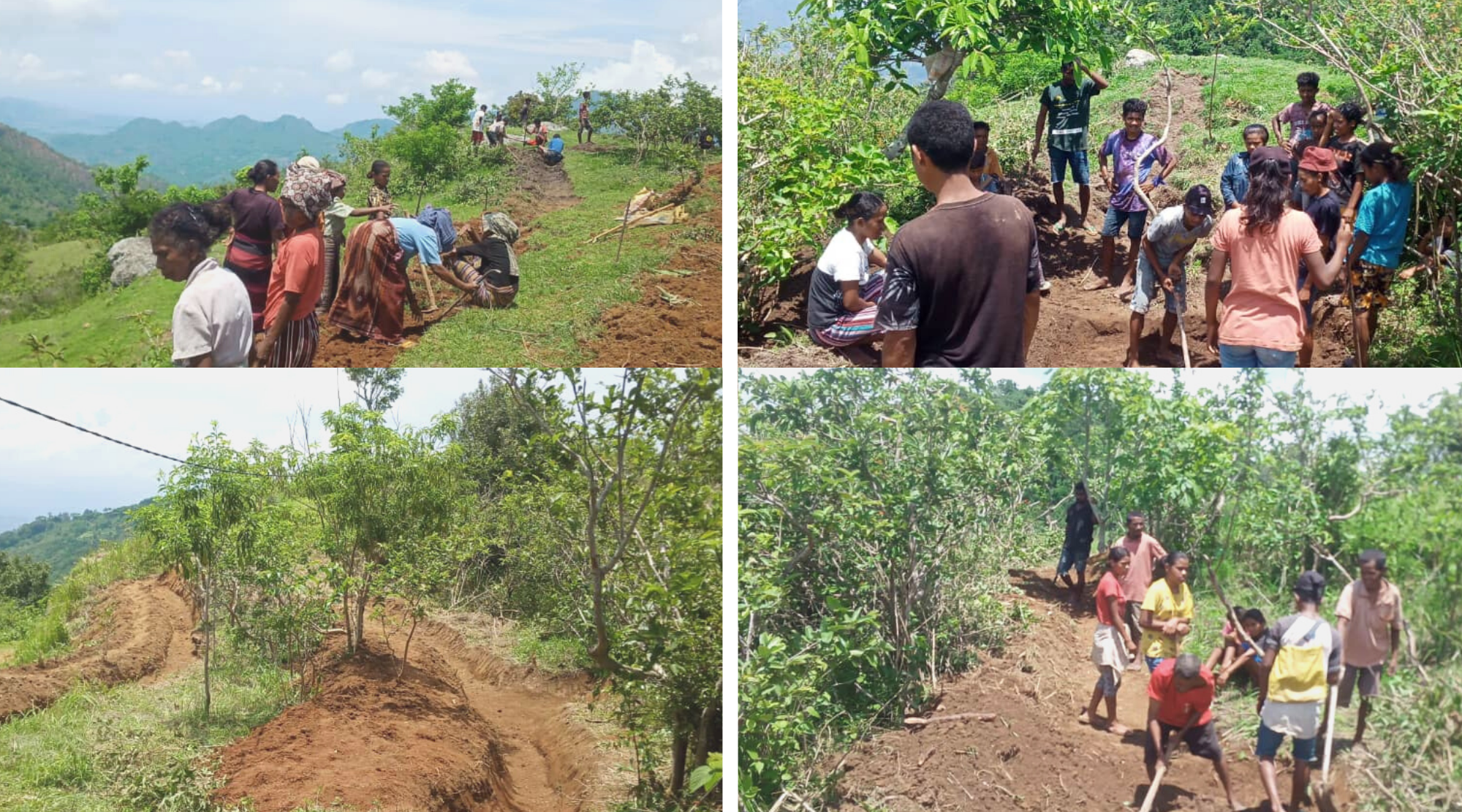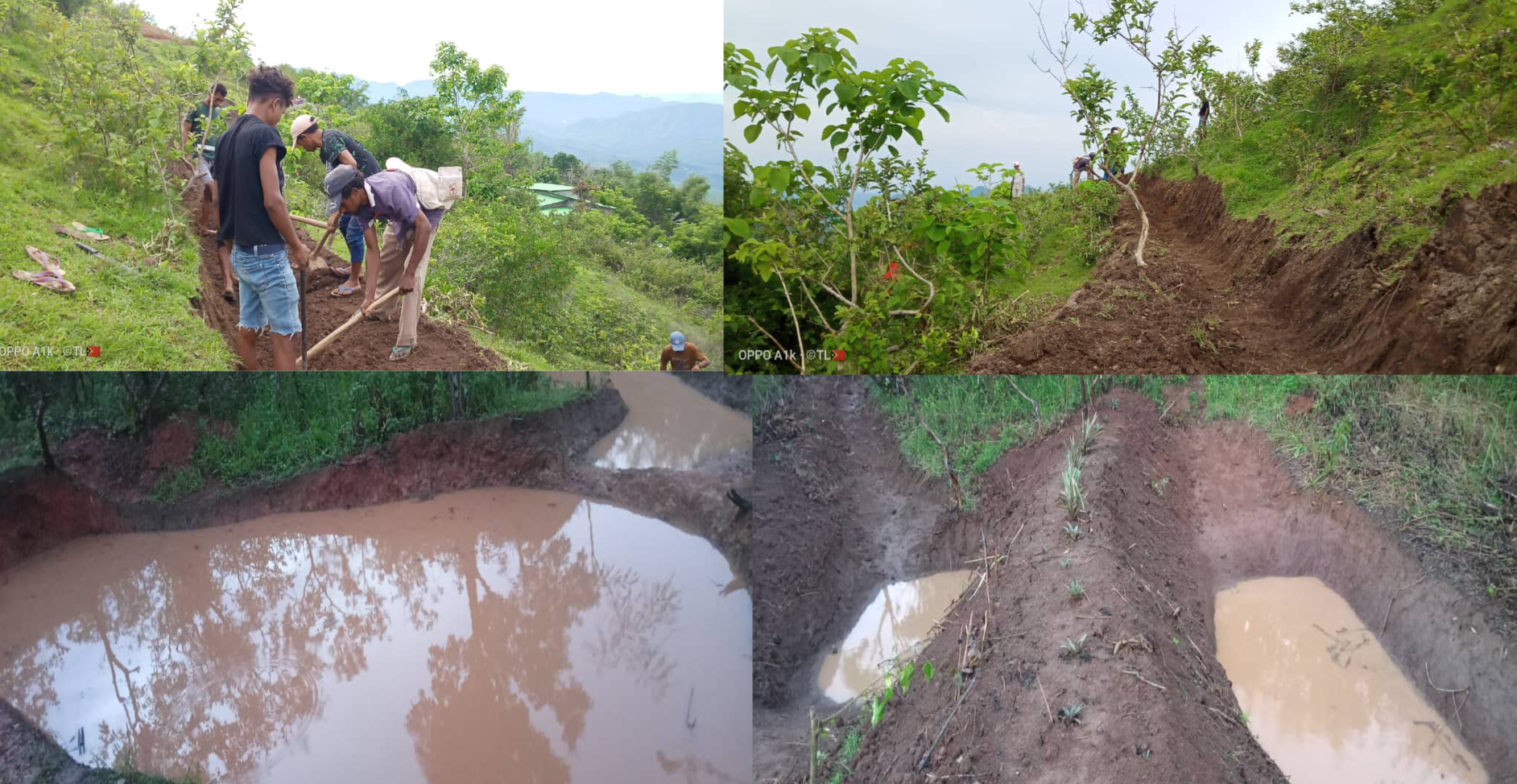Local Solutions for Water Conservation
June 30, 2022

Early in April this year, the Timor-Leste Accelerator Lab team visited Lakufoan Village of Oecusse enclave as part of our initiative to understand grassroots community solutions. This beautiful village faces many challenges for agriculture including high runoff and erosion rates, low soil productivity, high risks due to climatic hazards, and low income among the farmers. The upland farming community here have been experiencing climate change associated impacts, such as water scarcity during the dry season, stunted crop growth, low yield, and decreased farm inputs. Moreover, most of these upland farmers cultivate in lands with generally steep slopes that are prone to soil erosion and are dependent on rainfall for irrigation.

Conservation technique by farmers of Lakufoan, for Rainfall and Water Run Off harvesting
Upon our visit, we learned that the Support for the Institutional and Sustainable Development of Oe-cusse Special Administrative Region and the Special Zone of Social Market Economy Project implemented by UNDP with the Regional Administrative Especial Oecusse Ambeno (RAEOA) had been working hand-in-hand with the farmers at Lakufoan Village to practice both soil and water conservation management since 2018. The communities were building check dams, farm ponds, gully control structures, and pits excavation across the stream channels to conserve water for future use. These actions had helped to reduce peak discharge of water and restoring and rehabilitating land that has been damaged by excessive runoff to its original state and preventing further damage to it. Despite the sedimentation from runoff was used to fill up the existing gullies so more land can be available for farming.

Small streams with water conservation technique, by Lakufoan Community with the intake and water tanks supply
As a result, of rainfall water harvesting and conservation, sources of water were restored, and the quality of water had also improved gradually. This method was implemented in Lakufoan, Oben and Nunsena villages where upland farming is most common. The co-designed solutions adopted by UNDP project team and the community proved effective in protecting land degradation, improving soil health, and increasing soil-moisture availability and groundwater recharge. More and more community members had been involved with enthusiasm as they could see the tangible impact and allowed them to be part of sustainable farming effort practiced in Timor-Leste rural areas.
Another notable technique introduced to the community consisted of terracing the hills, constructing two big ponds for water collection, and planting Gamal trees for filtration and creating a vegetation belt surrounding the area. The rainwater as well as the water from the stream was channelled to the two ponds uphill. From these ponds, water was collected in a reservoir tank with a filtration system and further channelled to a second tank downhill for further filtration. Then the water was pumped up to a third tank closer to the residential area of the Lakufoan village. In order to manage the access to and distribution of this water, the village prepared a community action plan whereby there was an agreed schedule for villages to fetch the water during the day and the community members managed in this system under the leadership of the local authorities (e.g., the chiefs of Aldeias and Suco). This community-based and community-driven water system has enabled the community to collect more water during dry and wet seasons and has made them more resilient to adapt to the impacts of climate change.

Management with farm pond development by Farmer Community of Lakufoan

 Locations
Locations